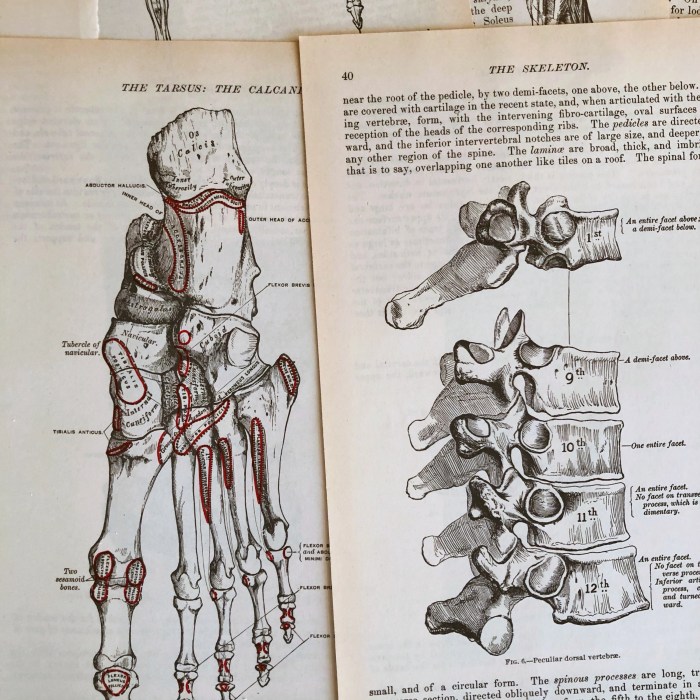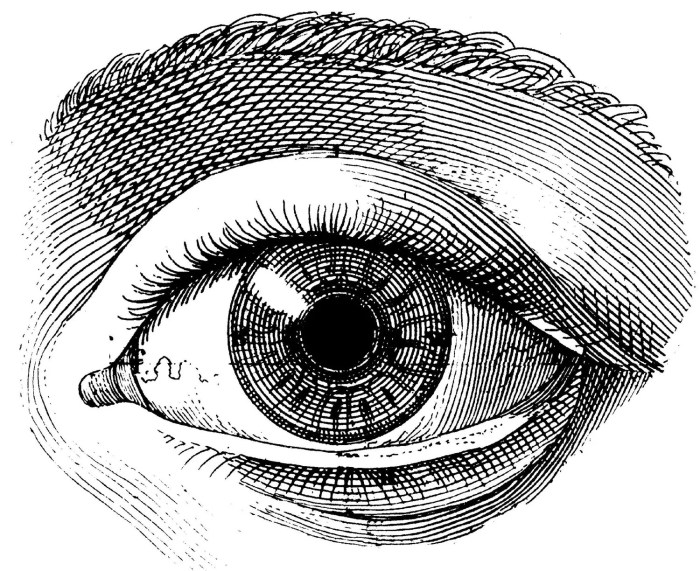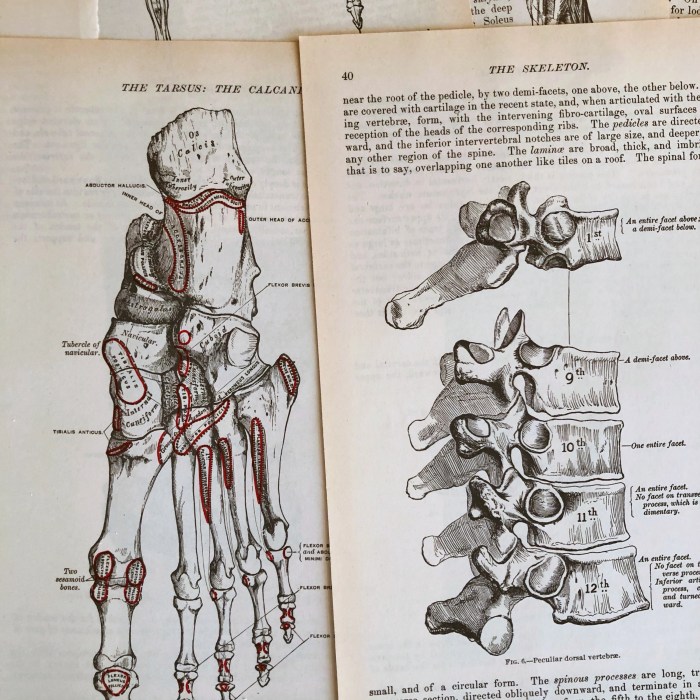Antique medical illustrations, a captivating fusion of art and science, invite us on an extraordinary journey through the annals of medicine. These intricate and visually stunning depictions not only chronicle the evolution of medical knowledge but also offer a unique glimpse into the cultural and social landscapes of their time.
From their humble origins in ancient Egypt to their pivotal role in the Renaissance and beyond, antique medical illustrations have played an indispensable role in shaping our understanding of the human body and its ailments. They have served as invaluable tools for medical education and research, providing a visual language that transcends linguistic and cultural barriers.
Historical Significance
Antique medical illustrations hold immense historical significance, dating back to ancient times. They emerged as a crucial tool for medical education and research, providing visual representations of human anatomy, diseases, and surgical procedures.
The earliest known medical illustrations can be traced back to ancient Egypt, where hieroglyphs and papyrus scrolls depicted medical knowledge. In the Middle Ages, illuminated manuscripts became a primary source of medical illustrations, combining text and images to convey complex medical concepts.
Famous Antique Medical Illustrators
Over the centuries, numerous renowned medical illustrators have made significant contributions to the field.
- Andreas Vesalius (1514-1564):A Flemish anatomist who revolutionized medical illustration with his groundbreaking work “De Humani Corporis Fabrica” (1543), featuring detailed and accurate anatomical drawings.
- Leonardo da Vinci (1452-1519):An Italian polymath who produced numerous anatomical sketches and drawings, providing valuable insights into human physiology and movement.
- William Harvey (1578-1657):An English physician who is credited with discovering the circulation of blood. His illustrations of the heart and circulatory system were instrumental in advancing medical understanding.
- Gérard de Lairesse (1640-1711):A Dutch painter and engraver who specialized in medical illustrations. His works were known for their artistic merit and anatomical accuracy.
Artistic Techniques and Styles

Antique medical illustrations employed a diverse range of artistic techniques and styles to accurately depict human anatomy, diseases, and medical procedures. These techniques and styles were influenced by contemporary artistic movements and the availability of materials and technologies.
Drawing and Engraving
Drawing and engraving were widely used techniques in antique medical illustrations. Artists used pen and ink, charcoal, or chalk to create detailed drawings, which were then engraved onto metal plates. The plates were then inked and pressed onto paper to produce multiple copies.
Watercolor and Gouache
Watercolor and gouache were also popular techniques, allowing for vibrant and realistic depictions of anatomical structures and medical conditions. Artists used transparent or opaque watercolors to create delicate washes or bold brushstrokes.
Woodcuts, Antique medical illustrations
Woodcuts were a relatively inexpensive technique, where images were carved into wooden blocks and then inked and pressed onto paper. Woodcuts were commonly used for anatomical illustrations in early printed medical books.
Influences of Artistic Styles
The artistic styles of the time also influenced medical illustrations. During the Renaissance, anatomical illustrations were influenced by the naturalistic style of painting and sculpture, with a focus on realism and perspective.
In the 18th and 19th centuries, medical illustrations were influenced by the Rococo and Neoclassical styles, which emphasized elegance and clarity of form. Illustrations from this period often incorporated decorative elements and used a limited color palette.
Notable Illustrations
- Andreas Vesalius’s “De Humani Corporis Fabrica” (1543): This groundbreaking work featured detailed anatomical drawings that revolutionized medical understanding.
- William Harvey’s “Exercitatio Anatomica de Motu Cordis et Sanguinis” (1628): This treatise on blood circulation included illustrations that clearly depicted the heart and its valves.
- Thomas Bewick’s “A General History of Quadrupeds” (1790): This work featured woodcuts that accurately illustrated animal anatomy, including the human body.
Medical Accuracy and Scientific Value
Medical accuracy was paramount in antique medical illustrations, as they served as essential educational tools for medical professionals and students. Illustrators faced challenges in accurately depicting complex anatomical structures, physiological processes, and pathological conditions, given the limitations of当时的observation and imaging techniques.
Challenges in Achieving Medical Accuracy
Illustrators relied heavily on dissections and anatomical studies to capture the intricacies of the human body. However, the availability of cadavers and the precision of dissection tools were limited, leading to potential inaccuracies. Additionally, the understanding of human physiology and pathology was still evolving, which influenced the interpretation of medical observations.
Examples of High and Low Medical Accuracy
- Andreas Vesalius’s De Humani Corporis Fabrica(1543) : Known for its highly accurate and detailed anatomical illustrations, which revolutionized the understanding of human anatomy and influenced medical practice for centuries.
- William Harvey’s Exercitatio Anatomica de Motu Cordis et Sanguinis in Animalibus(1628) : Demonstrated the circulation of blood through the body with relatively accurate illustrations, despite some minor inaccuracies in the depiction of the heart’s valves.
- John Woodall’s The Surgeon’s Mate(1617) : Included illustrations with inaccuracies in anatomical proportions and depictions of surgical procedures, reflecting the limited knowledge of the time.
Symbolism and Iconography

Antique medical illustrations often employed symbolism and iconography to convey complex medical concepts and ideas. These visual elements added depth and meaning to the illustrations, allowing artists to express hidden messages and insights beyond the literal depiction of anatomy or medical procedures.
Symbolism in medical illustrations can be seen in the use of colors, shapes, and objects to represent specific concepts or ideas. For instance, the color red might be used to symbolize blood or inflammation, while the shape of a heart could represent love or compassion.
Iconography, on the other hand, refers to the use of recognizable symbols or images that have specific meanings within a particular culture or context.
Examples of Symbolism and Iconography
- In the “Vesalius’ Fabrica” (1543), the skeleton is depicted holding a book, symbolizing the importance of knowledge and education in the field of medicine.
- In the “Anatomia Humani Corporis” (1685) by Govard Bidloo, the figure of Death is shown lurking in the background of an anatomical dissection, reminding viewers of the inevitability of mortality.
- In the “Tabulae Anatomicae” (1741) by Bernhard Siegfried Albinus, the muscles of the body are depicted as muscular figures, conveying a sense of strength and dynamism.
Cultural and Social Context
Antique medical illustrations were not created in a vacuum but rather reflected the cultural and social context of their time. Social norms, beliefs, and values had a profound influence on the way that medical conditions were depicted and understood.
Influence of Social Norms
Social norms played a significant role in shaping the content and style of antique medical illustrations. For example, in the Victorian era, it was considered taboo to depict nudity in any form. As a result, medical illustrators often had to resort to using draped figures or other means to conceal the body.
This can be seen in the work of Henry Gray, whose illustrations for his classic textbook Gray’s Anatomywere carefully designed to avoid any hint of indecency.
Influence of Beliefs and Values
The beliefs and values of the time also had a significant impact on antique medical illustrations. For example, the belief in the four humors (blood, phlegm, yellow bile, and black bile) was prevalent in the Middle Ages and Renaissance. This belief led to the creation of many illustrations that depicted the effects of an imbalance of the humors on the body.
Influence of Cultural Context
The cultural context in which antique medical illustrations were created also played a role in their development. For example, in China, medical illustrations were often influenced by traditional Chinese medicine, which emphasized the importance of qi (vital energy) and the balance of yin and yang.
In contrast, in Europe, medical illustrations were more influenced by the Greek and Roman medical traditions, which focused on the study of anatomy and physiology.
Examples of Cultural and Social Influences
There are many examples of antique medical illustrations that reflect the cultural and social context of their time. For example, the 15th-century Nuremberg Chronicleincludes a woodcut illustration of a woman giving birth in a bath. This illustration reflects the belief that childbirth was a natural process that should take place in a warm and comfortable environment.Another example is the 16th-century painting The Sick Womanby Hieronymus Bosch.
This painting depicts a woman suffering from a mysterious illness. The painting reflects the fear and superstition that surrounded illness in the Middle Ages.
Modern Applications and Interpretations
Antique medical illustrations continue to be relevant and significant in the modern world. They serve as valuable resources for medical education and research, offering insights into the history of medicine and the development of medical knowledge.
In medical education, these illustrations are used to teach students about the anatomy, physiology, and pathology of the human body. They provide a visual representation of complex medical concepts, making them easier to understand and remember. Additionally, they can be used to illustrate the evolution of medical knowledge and techniques over time.
Antique medical illustrations, with their intricate details and historical significance, are highly sought after by collectors. For those interested in acquiring these unique pieces, art bidding platforms provide an avenue to participate in auctions and compete with other enthusiasts. Whether you’re a seasoned collector or a newcomer to the world of antique medical illustrations, art bidding offers an exciting opportunity to add to your collection and appreciate the beauty and artistry of these captivating historical artifacts.
Contemporary Artists and Designers
Contemporary artists and designers often draw inspiration from antique medical illustrations in their work. These illustrations provide a rich source of imagery that can be used to create new and innovative works of art. For example, some artists have used these illustrations to create sculptures, paintings, and prints that explore the relationship between art and science.
Conservation and Preservation: Antique Medical Illustrations
Antique medical illustrations hold immense historical and scientific value, making their preservation and conservation of paramount importance. These illustrations provide a glimpse into the medical practices and knowledge of the past, serving as a valuable resource for researchers and scholars.
Preserving these illustrations poses challenges due to their age, fragility, and susceptibility to deterioration from environmental factors such as humidity, temperature, and light. Specialized techniques are employed to ensure their longevity, including proper storage conditions, controlled environments, and digitization.
Institutions and Organizations
Numerous institutions and organizations are dedicated to preserving and conserving antique medical illustrations. These include:
- The National Library of Medicine (NLM) in Bethesda, Maryland, houses a vast collection of medical illustrations and provides access to digital images through its online database.
- The Wellcome Collection in London, England, holds a significant collection of medical artifacts, including illustrations, and offers exhibitions and educational programs.
- The Mutter Museum in Philadelphia, Pennsylvania, displays a collection of medical specimens and illustrations, providing insights into the history of medicine and surgery.
Resources and Further Reading
To delve deeper into the captivating world of antique medical illustrations, a wealth of resources is available for your exploration. Books, articles, and online platforms offer invaluable insights into their historical significance, artistic techniques, medical accuracy, and cultural impact.
Additionally, renowned museums, libraries, and collections around the globe house significant repositories of these fascinating artifacts. By visiting these institutions, you can witness firsthand the beauty and historical importance of antique medical illustrations.
Recommended Reading
- The History of Medical Illustrationby Howard Wilcox
- The Art of Healing: A History of Medicine in Paintings and Printsby Charles Daremberg
- The Wellcome Book of Medical Imageryby Robert K. Headland
- The Illustrated History of Medicineby Roy Porter
- Medicine and the Artist: Medical Portraits and the Rise of the Physician as Healerby Charles Lockyer Sherrington
Online Resources
- Visible Proofs: The History of Visual Aids in Medicine (National Library of Medicine)
- The History of Medicine Image Gallery (University of Oxford)
- Rare Books and Manuscripts (Royal College of Physicians of Edinburgh)
- The Wellcome Collection
- Medical Images (University of Edinburgh Library)
Museums and Collections
- The National Library of Medicine(Bethesda, Maryland, USA)
- The Wellcome Collection(London, UK)
- The Royal College of Physicians of Edinburgh(Edinburgh, UK)
- The University of Edinburgh Library(Edinburgh, UK)
- The National Library of France(Paris, France)
Last Recap

In the modern era, antique medical illustrations continue to captivate and inspire. Their enduring relevance lies not only in their historical significance but also in their enduring aesthetic appeal. Contemporary artists and designers draw inspiration from these timeless works, reinterpreting them in innovative ways that resonate with audiences today.
Preserving and conserving antique medical illustrations is of paramount importance. These fragile and irreplaceable artifacts provide a tangible connection to our medical heritage and offer invaluable insights into the history of science and art. By safeguarding these treasures, we ensure that future generations can continue to marvel at their beauty and learn from their wisdom.



